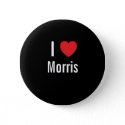Ol' Motown officially came into existence in 1871. It's easy for me
to remember because I remember the town centennial in 1971. It was the days
before Prairie Pioneer Days. A big summer celebration was against the
sleepy norm. When you thought of a summer celebration back then, you
thought of the Glenwood Waterama.
Legend has it the Waterama was threatened by members of my generation who'd come to town and be a little too unrestrained.
Today we have summer celebrations all around. Cyrus just had theirs.
But let's go back to the 19th Century. We could have been the
backdrop for a Clint Eastwood western. Those Eastwood movies were really
about life under territorial government. "Hang 'em High" even taught us
some particulars about the judicial system - pretty skeletal.
Morris was a mere tent town in the 1870s. Chief Justice Brown
called us "a typical frontier railroad town." Brown was writing for a
collection called "Historical Contributions." He noted we had "much of
the disorder and roughness incident to most all new towns (out here)."
He talked about "the solider of fortune, the gambler, the
adventurer and others of restless, uncertain and doubtful purpose, to be
shunned, feared and encouraged to move on."
Just as the Eastwood character was a lonely and vulnerable presence
as "law" in "Hang 'em High," answering to a beleaguered judge, we can
assume our county sheriff was likewise through most of the 1870s. He was
literally the only law in town!
Culture and law made their restless inroads. It was through fits
and starts to be sure. Churches and schools sprouted. But as the 19th
Century wound down, there were rough-hewn and dangerous elements still
very much out and around.
"Morris had its own ugly outside world to contend with," one account read.
No transition was made easily or routinely. Such is the case with
all fundamental cultural changes. The Internet developed in fits and
starts, right?
The 19th Century was entirely a horse and buggy world. We learn
that the first automobile in Morris was a 1901 Olds owned by the Fowler
family. Undoubtedly it was little more than a novelty then. I'm reminded
of the movie "The Shootist" which was John Wayne's last, showing a very
early car amidst the typical horses.
At the end he pauses to look at the contraption as he's about to
enter a saloon for his final gunfight. The car is symbolic, suggesting
to Wayne that his era of gunfighting is being ushered out by
civilization's advance. We should note he was a "good guy" in the movie.
He explained his personal ethos very simply as one in which he treated
others the way he'd want to be treated. It was hard for such an ethos to
rule in a world of limited law enforcement, where the unruly elements
could throw their weight around.
There was an organization called the Women's Improvement League in
Morris at the turn of the century. They petitioned the village council
to have all saloons closed on Sunday. The council heard complaints in 1902 about
the alleged existence of brothels. We saw an ordinance
passed in 1904 limiting the length of rope used for picketing cattle so
they couldn't stray into the streets or other yards.
It's interesting to ponder the very basic challenges the hearty
residents out here dealt with. It's interesting to contrast with the
very nitpicking kind of laws and regulations we live with today. Maybe
today we have become over-regulated. You had to be thankful just waking
up alive and healthy in the 19th Century.
The 1870s in Morris included an economic panic, a grasshopper
plague of three years, intense blizzards and prairie fires. The human
spirit prevailed. The odds were overcome. Ambitious home-building marked
the early 1880s. The school, considered quite fine, was a catalyst for
this. Churches enhanced the foundation. That beleaguered sheriff gave
way to better law enforcement provisions.
The Stevens County Tribune reported in 1881 that maybe our streets
could be cited as another strength, "but we guess we won't," it added in
a note of levity. Room for improvement, yes.
Today Morris' most significant growth is to the east. A large
number of very high-quality homes have gone up out by the bypass and
even further out, by the Pomme de Terre River. A lot of that space was
wild and windblown when I was a kid. We see "McMansions" out that way
now.
A person with whom I was walking one day said "what do these people
do, to make all this money?" The question is really too logical to call
for an answer. It's just the way it is. I'm too naive to ever get on
such a course. I believe that if you're going to buy something, you
should have the money to pay for it. One of the most elaborate houses in
our community was reportedly built by a family whose business had gone
under more than once. I don't understand these things.
In the 1880s, Morris' growth was to the west. Various additions
sprouted. You'd never know it today, but Park Avenue was a place of
distinct privilege and prestige. Today it just blends with the rest of
Morris. But my, in the late 19th Century it was called "the drive of the
city." People would burst their buttons in their buggies along Park on
lazy summer evenings.
I have written before about the Stanton house along Park. It was
put up by the son of Abe Lincoln's secretary of war. Not much is known
about young Lewis Stanton who had health problems. His legacy is
"Chimneys" which was the name of his Victorian house along Park Avenue,
still standing. You see it as you go to West Wind Village. It's still
eye-catching. The Vince Dalager family used to live there. We wish Vince
well as he battles health issues related to age now. He was a trusty
electrician.
Growing pains out on frontier
Morris gradually put aside its rough edges and the unruly people
who made for a frontier atmosphere in the 1870s. It could have been
worse. It certainly seemed to be worse in southern Minnesota.
It was the day after Christmas, of all times, when Mankato declared
war (in effect) on New Ulm in 1866. We learn in a book by Ethelyn
Pearson that "a raiding party of 300 set out from Mankato, armed with
guns and two pieces of artillery." Whoa.
Thus was the account in the press, although Ethelyn (mother of
retired Morris industrial arts teacher Larry Parson) suspects some
exaggeration. Mankato and New Ulm were county
seats of Blue Earth and Brown Counties, respectively. There was no "war" but the
circumstances were certainly a tinderbox.
The catalyst for such strong feelings was a bill for 75 cents worth
of whiskey. A protest was heard that the bill was excessive by 25
cents. OK, some other factors were certainly woven in.
Trappers George Liscomb and Alexander Campbell of Mankato pulled into New Ulm where Christmas celebrating was robust. The trappers had quite a harvest of muskrat skins. These they sold in New Ulm for about $25.
Trappers George Liscomb and Alexander Campbell of Mankato pulled into New Ulm where Christmas celebrating was robust. The trappers had quite a harvest of muskrat skins. These they sold in New Ulm for about $25.
Their next order of business: seeking some entertainment (quite the
dubious step). They arrived at the National Hall Saloon. A little
alcohol, right? What could go wrong? The patrons played cards.
The Mankato pair undertook a dance just for fun, mocking Indians in
a faux "scalp dance." This was highly sensitive since the Sioux
outbreak had occurred just four years earlier. We had bloodshed out here
just like in the eastern Civil War. Was God punishing this young nation
for something? Slavery?
While dancing, Liscomb made the most impolitic remark, that "he
didn't give a damn for the Dutch." Now we have trouble. Then the bill
was presented for the drinks. The trappers took exception. Already they
had been derided, inaccurately as it turns out, as "half-breeds." The
recipe for violence was ripe.
The trappers stabbed a man. The melee grew before the intrepid
sheriff, a man named George Jacobs, was able to intervene and take the
trappers to jail. Liscomb was seriously wounded, bad enough that he
would have died had other more perilous circumstances not intervened.
We're talking lynching.
The Duluth lynching is famous but I hadn't heard of this one in
Mankato until reading Ethelyn's book. Rumors grew around town of
"half-breed redskins" fomenting violence.
The sheriff couldn't prevent the mob intervening. The mob hanged
the two after first abusing them quite badly. The sheriff continued
powerless. Minnesota had become a state presumably with the law
enforcement power to ensure civility, but rough edges remained. Clint
Eastwood probably couldn't have done anything. The bodies disappeared.
Word of the incident reached Mankato where word circulated that an
"army" should be dispatched. Mankato-ites were aware the trappers were
not so-called half-breeds. They were in fact members of Company "H",
Second Regiment of the Minnesota Militia.
Captain L.N. Holmes of the Mankato militia took a detachment of men
to New Ulm. The bodies were finally found and taken to Nicollet County.
A coroner couldn't be secured.
The bodies were then put on a wagon and taken to Mankato. There an inquest resulted in facts of the incident being known.
It appears the militant feeling just slowly dissipated. But Ethelyn
wrote "it was years before New Ulm and Mankato were able to forget and
patch up the differences created by the catastrophe of Christmas Day,
1866."
Pearson wrote about this in her book "It Really Happened Here!"
Morris had its own uncivilized element but nothing like what
transpired to the south. In 1866 our Wadsworth Trail, precursor to the
railroad, was just two years old. Burrowing owls probably ruled where
today Morris sits. The human spirit is undeterred.
We overcame so much adversity and misery, but today we have to
worry about getting seat belt tickets. Maybe civilization is going
backwards.
- Brian Williams - morris mn minnesota - bwilly73@yahoo.com






















No comments:
Post a Comment